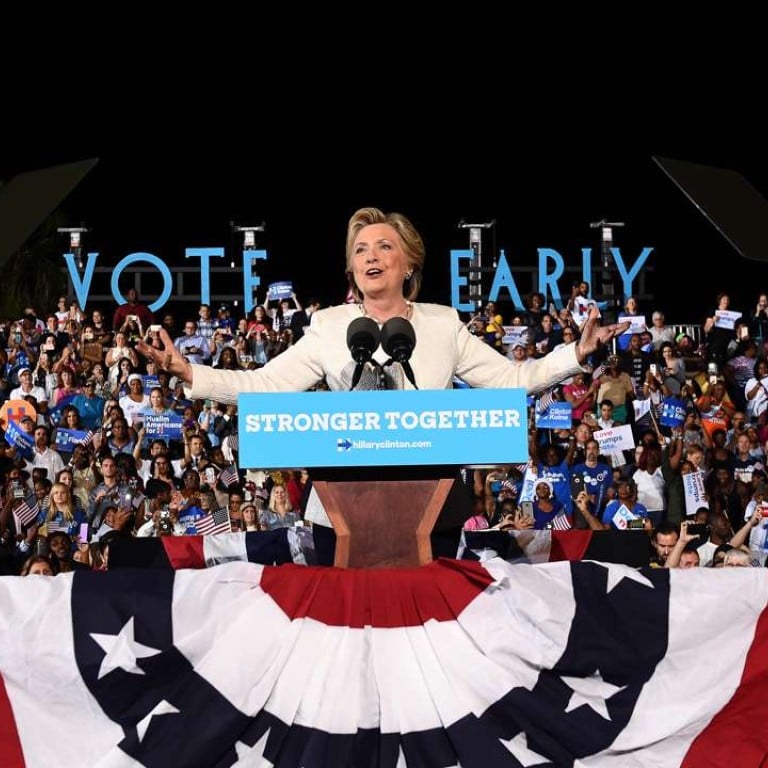
Hillary Clinton: the world’s best investor or an out-and-out crook?
In 1978 one novice investor made gains of 10,000 per cent in just 10 months by trading US cattle futures...guess who it was
What do you consider a good investment return? In these days of ultra-low interest rates, with much of the government bond universe in Europe and Japan offering negative yields, many investors will be happy with the 5 per cent total return generated over the last 12 months by long-dated US Treasury bonds. Certainly that’s better than the flat performance of US and Hong Kong stocks, and a big improvement over the losses made by the typical hedge fund over the last year.
Even so, 5 per cent is thin pickings by historical standards, especially when you consider that in 1978 one novice investor made gains of 10,000 per cent in just 10 months by trading US cattle futures. And this was in the days before high-speed data feeds, electronic dealing and cheap trading algorithms levelled the playing field and made the markets more accessible to ordinary retail investors. Indeed, so impressive was this achievement that many professional traders have wondered how it was done, with some flatly declaring it to be impossible without committing fraud on a grand scale.
Others say the investor was just extraordinarily lucky. And the name of this fortunate novice? Hillary Clinton.

In 1978, Clinton was a lawyer earning US$24,250 a year, with a husband who took home US$26,500 from his job as Arkansas attorney general. Yet in October that year she deposited US$1,000 with the now defunct brokerage house Refco to open a futures trading account, and within weeks was running positions in the cattle futures market worth millions of US dollars. Such massive exposure would soon have bankrupted most novices, but Clinton, it seemed, had the Midas touch right from the start. Her very first trade generated a profit of US$5,300, and by the time she closed the account in July the following year, she had made US$99,541.
This performance raises a few questions. For one thing, at the time the minimum margin requirement on a single cattle futures contract was US$1,200, meaning Clinton’s account must have been insufficiently margined from the start. More to the point, how did she make such gains? As the chart shows, between October 1978 and July 1979, front month cattle futures gained 7.3 per cent in price, with a long upward trend, followed by a downward reversal. If Clinton had leveraged up by a typical factor of five, adopted a buy-and-hold strategy, called the market top perfectly and then gone short, at most she could have made US$9,369. That’s not bad, but it’s less than a tenth of what she did make.

Clearly Clinton’s account was traded more actively, and with very few bad calls. According to a 1995 study by Caroline Baum and Victor Niederhoffer, 80 per cent of Clinton’s trades were profitable. Most professional traders would be happy with a hit rate of 55 to 60 per cent. Another study, published in 1994, put the probability of a trader earning Clinton’s returns in the cattle futures market over the same period at one in 31 trillion. And that’s before factoring in commission fees.
In short, Clinton’s performance looks astronomically improbable. But a look back at Hong Kong’s financial history suggests one way a novice could walk away with such stellar returns.
Back in the early 1990s, Jardine Fleming’s Ninja hedge fund regularly generated three-figure returns trading in exotica such as Japanese equity derivatives. But it turned out those returns were not all they seemed. Fund manager Colin Armstrong had taken advantage of lax controls to retrospectively allocate winning trades to the Ninja fund, while losing trades went to lower-profile accounts. Not surprisingly, the Ninja fund’s performance soared.

Retrospectively allocating successful trades to the accounts of favoured clients is known as “rat trading”, and it was rife in the US commodity markets of the 1970s. Indeed, Clinton’s broker, Refco, got a record US$250,000 fine in 1979 after it emerged that its Arkansas office had tampered with time stamps to allocate trades to customer accounts only after the market had closed.
That is not to say Clinton knew what was going on in Refco’s office. She later insisted she made all her trades herself, after reading stories in the paper. But cynics have noted that the friend who introduced Clinton to futures trading was a senior executive at giant Arkansas-based corporation Tyson Foods; that the head of Refco’s Arkansas office at the time was a former Tyson employee; and that Tyson benefited heavily from laws passed by Bill Clinton on his election as Arkansas governor in 1979.
This, of course, is all ancient history, and surely says nothing at all illuminating about the character of the person who may well be elected the 45th president of the USA.
Tom Holland is a former SCMP staffer who has been writing about Asian affairs for more than 20 years

